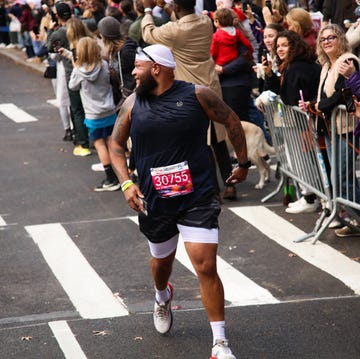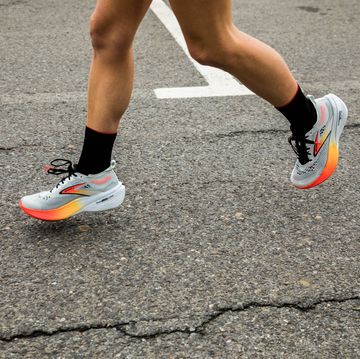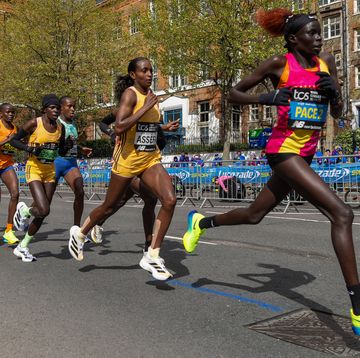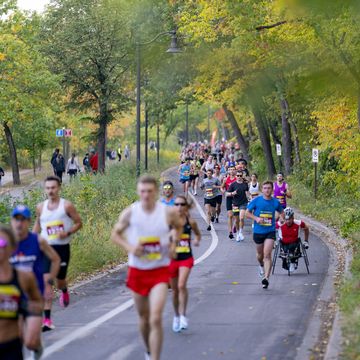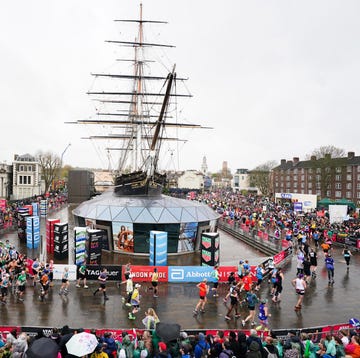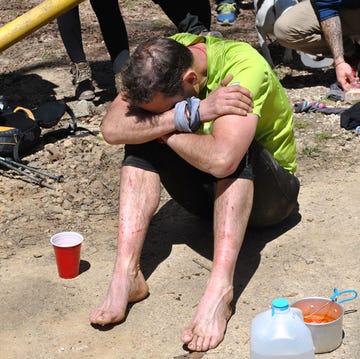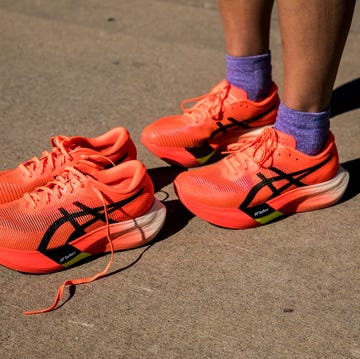You've charted every long run, hard workout, and recovery effort to prep for your upcoming marathon or half. But do you know precisely what you'll do on race day? "If you took 10 or 16 weeks to train, you want to protect that investment with a race-day plan," says Boulder-based coach Ric Rojas, who suggests drafting a plan three weeks before race day, then adjusting later if necessary. By pinpointing a realistic finish time, planning your per-mile pace, and using a tested fueling, hydration, and wardrobe strategy, you boost your odds of meeting your goal, whether that's setting a personal record or simply crossing the finish line. Here's how to craft your best plan.
Set a Realistic Goal Time
Having an idea of how long it will take to finish your event will help you plan your race pace and your strategy. If you have run a shorter race in the past four months, you can plug that time into a race-predictor calculator (such as the one at runnersworld.com/predictor), which will give you estimated times for a variety of distances given proper training. The closer the distance is to your goal race, the more accurate a predictor it will be, says Rojas. If you haven't raced recently, look back on the average pace of your long runs. You can typically expect to race a marathon or a half 30 to 60 seconds faster per mile, says Phoenix-based coach David Allison. Test your goal time with a "truth serum run"—a long run with close to half your goal distance run at goal pace. Allison recommends doing one three to five weeks from race day. Half marathoners should run 10 to 12 miles with the last six or seven at goal pace; marathoners, 18 to 20 miles with the last 12 at goal pace. The effort should feel comfortably hard. If it feels harder, or you're unable to maintain the pace, scale back your goal.
TRAINING PLANS: Find a Runner’s World Marathon Plan to run your first, or fastest, 26.2.
Plot Course-Specific Splits
Once you have your goal time, research the course profile, porta-potty locations, and average weather to determine how to pace yourself. Truly Type-A runners might create a spreadsheet and plug in a different pace for each mile, but another effective method is to have cumulative time goals for key points (10K, 10 miles, half marathon, 20 miles). Add at least six to eight seconds to your planned average pace for the first two to three miles to warm up, navigate crowds, and help yourself resist the temptation to go out fast. "Even if you run 15 seconds slower for the first four miles, you are only one minute behind with 22 miles to make it up," says Allison. Also build in time to get up hills—the steeper and later, the more the adjustment. Usually need a pit stop around 10-K? Add a minute to that mile. Then, determine where to gradually make up the time, on stretches you tend to run well (downhills? flats?) and by picking up your pace slightly in the second half. If you want your plan with you, write it on your arm, or scrawl it on athletic tape and stick it to your arm on race morning.
Have a Fuel, Hydration, and Wardrobe Strategy
Never try anything new on race day, says Allison. Instead, rehearse on a few long runs late in your training: Wake up at the time you'll rise on race day (keeping time changes in mind if you'll be traveling), put on the clothes and shoes you'll wear, and eat the breakfast you'll eat. Note what works and have it on hand race morning.
If you plan to use race-provided gels and sports drinks on the course, find out what they'll have and try them in training. Write down how much fuel, water, and sports drink you take in and when, and incorporate it into your plan. Make a mental note of where the aid stations will be and at which you'll need to take a gel.
Make a Race-Morning Schedule
"Particularly if I am a first-time marathoner, I want to know exactly where I am going to be the entire morning of the race," says Rojas. Make a schedule of everything you'll do from the time you wake up until start time, including getting dressed, eating, getting to the race, checking your bag, standing in the porta-potty line, and finding your corral. Add at least an extra half-hour to your commute time to allow for traffic jams or missed connections, says Allison, and plan on being at the race at least one hour before the gun goes off.
Have a Backup Plan
If the forecast calls for unseasonable warmth, adjust your goal, says Lewis G. Maharam, M.D., chairman of the International Marathon Medical Directors Association. High temperatures prompt blood to mobilize to your skin to shed body heat, leaving less to fuel your muscles and digestive system. Start slow—anywhere from 10 to 45 seconds per mile slower than goal pace, depending on how hot it is and how experienced you are. If you're feeling up to it, pick up the pace by two or three seconds per mile after the halfway point, says Rojas. To keep body temperature down, Maharam recommends dumping cups of cold water over your head. If ice is available, put some under your hat or in your sports bra, and drink to thirst as you run.



